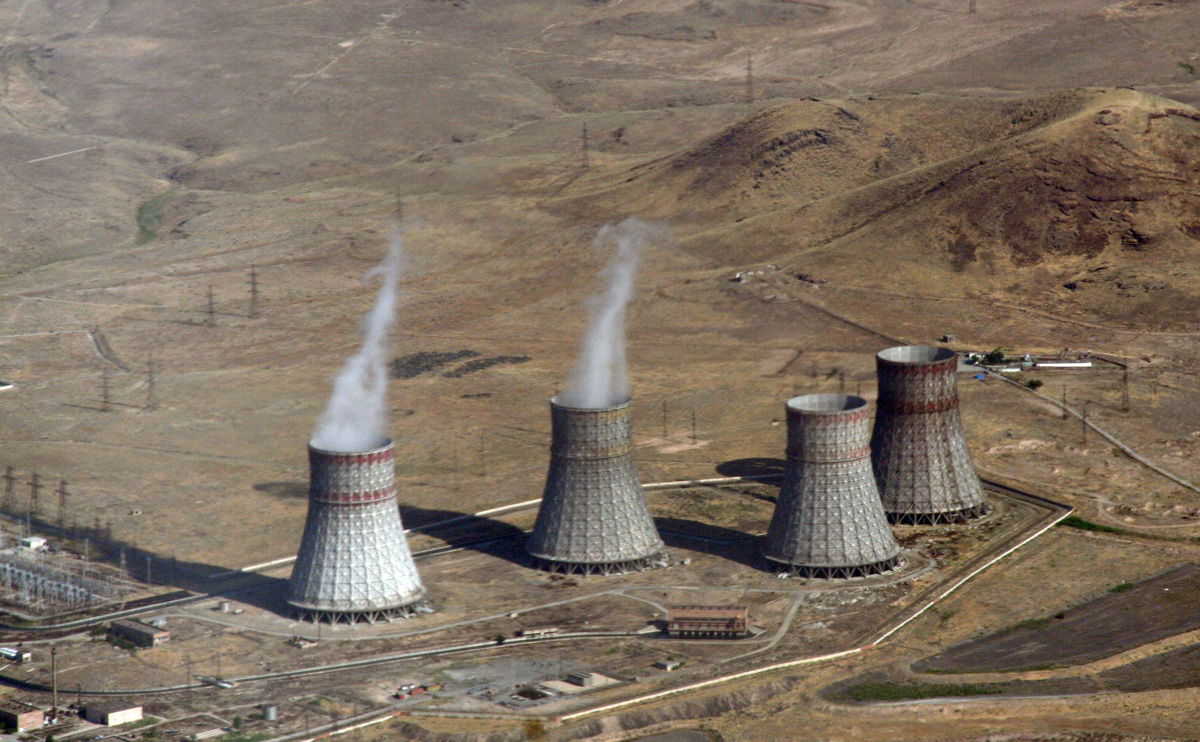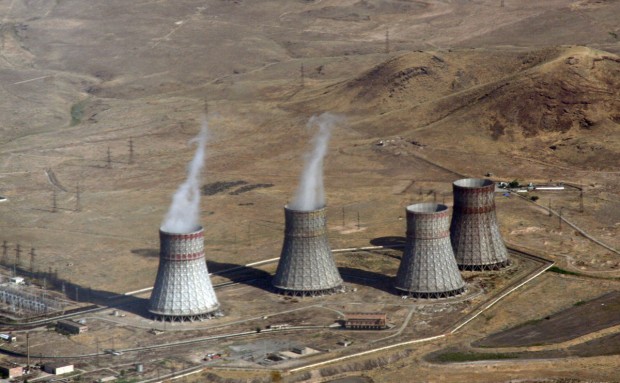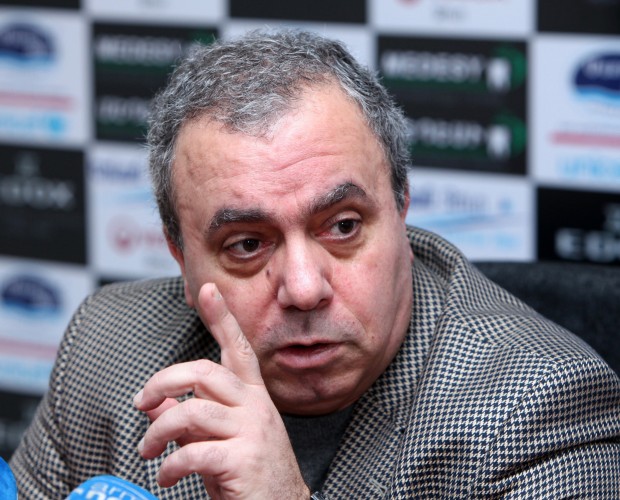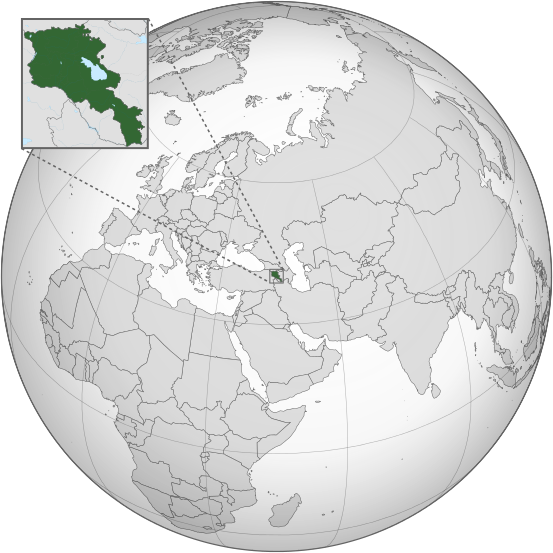
A Big Threat at the Heart of Caucasus

Bearing in mind the risks and threat to the region that come from Metsamor Nuclear Power Plant(NPP) located in Armenia and concerns of Azerbaijan in this regard, it constantly raises the issue of decommissioning of this nuclear facility, Ministry of Foreign Affairs of Azerbaijan announces.
Mr. Ilham Aliyev, the President of the Republic of Azerbaijan, in his speech delivered at the Nuclear Security Summit held in Washington on March 31st – April 1st 2016, drew the attention of international community to Metsamor NPP, which was built in 1976 based on technologies of “Chernobyl” NPP, and once again called on to take measures against the threat emanating from this facility.
Recently there is an increase of revealed facts about the special role played by Armenia in smuggling of nuclear and radioactive, as well as nuclear waste materials. Many groups of citizens of Armenia dealing with smuggling of radioactive materials were exposed many times in the territories of neighboring countries. Some of such groups even tried to smuggle Highly Enriched Uranium and Cesium-137 from the territory of Armenia in 2003 and 2010. It is also known that the group of 3 Armenian citizens arrested in Georgia this April, previously worked on Metsamor NPP. One of the detainees was identified as a former associate of the Armenian secret service. This group planned to sell Uranium-238 that costs 200 million US dollar, to the Middle East region. On this occasion, it is once more worth to remind about the risks deriving from Armenia and Metsamor NPP for the nuclear security of the region, taking into account the possibility of preparing “dirty bombs” from the revealed sources that radioactivity during the explosion.
Moreover, the dubious condition of spent fuel and waste material from Metsamor NPP endanger nuclear security and safety situation in the region, especially within the context of occupation by Armenia of the territories of Azerbaijan.

A recent statement by Seyran Ohanyan, the Minister of Defense of Armenia, and by Hrant Bagratyan, the former Prime Minister of Armenia and current Member of the Parliament from the National Congress of Armenia fraction, that Armenia possesses a special secret weapon and or “nuclear weapon” raise questions.
These actions of the Republic of Armenia are in contradiction with Armenia’s commitments within the framework of Agreement between the Republic of Armenia and the international Atomic Energy Agency (IAEA) for the Application of Safeguards in connection with the Treaty on the Non-Proliferation of Nuclear Weapons, Convention on the Physical Protection of Nuclear Material and Amendment to this Convention, Convention on Nuclear Safety, International Convention for the Suppression of Acts of Nuclear Terrorism, IAEA Code of Conduct on the Safety and Security of Radioactive Sources, and supplementary Guidance on the Import and Export of Radioactive Sources, as well as the resolutions of the United Nations Security Council 1373 (2001) and 1540 (2004) on prevention of proliferation of nuclear, chemical, biological weapons and their delivery systems.
Azerbaijan deems it necessary that the IAEA should take under strict control and assess the systematic cases of smuggling of radioactive materials arranged by Armenia, and threats of “nuclear weapons” voiced by Armenian officials who are obsessed with revenge against Azerbaijan.

Trafficking in nuclear and other radioactive materials by Armenia
-1999, May 22 – Berehovo town, Ukraine: Two Armenians trying to sell 20kg of Low-Enriched Uranium (LEU) U -235 ore and a buyer were arrested by Ukrainian law enforcement officials in the town of Berehovo – The Armenians demanded $35,000 per kg for the Uranium. They received heavy radiation doses because they had handled the material with their bare hands and carried it in rubber bags. According to one source, the material was enriched Uranium in white powder form stolen from a radioactive materials recycling facility in Krasnoyarsk. Other sources said it was LEU metal suitable for making fuel for RBMK reactors,
-2001, December 19 – Samtskhe-Javakheti region, Georgia: 300 g of LEU were intercepted in an intelligence operation. The origin of the material was from Armenia,
-2003, June 26 – Armenia-Georgia border (Sadakhlo-Bagratashen checkpoint): Smuggling case 170 grams of Highly Enriched Uranium (HEU) U-235 (~90%). Detected by the Georgian border guards. An Armenian “war hero” named Garik Dadayan was busted when he walked through a nuclear sensor on the Georgia-Armenia border with 170 grams of unsheathed HEU in a tea box in two batches: 70 grams and 100 grams; and in two different forms: UO2 and U3O8. Reportedly, HEU was obtained from the Novosibirsk nuclear fuel fabrication facility, Russia. HEU sample was provided to Russia; remaining HEU was transferred to the USA. Dadayan was handed over to the Armenian government, tried, and sentenced in 2004 just to 2,5 years in prison,
-2003, December 29 – Meghri checkpoint on the Armenian-Iranian border, Armenia: Armenian customs officials discovered a radiation source in a scrap metal shipment bound for Iran. It was reported that scrap metal was outbound from the Armenian Metsamor Nuclear Power Plant (NPP). Radioactive object discovered at the Armenian-Iranian border was an empty casing from a radioactive source, which previously contained strontium-90 (The presence of the casing for a radioactive source without the radioactive source itself would appear to imply that the source now rests at an unknown location without the protective barriers necessary to avoid injury to the public). Spectral analysis showed that the object has a high radioactivity level,
-2004, March 13 – Armenia-Georgia border (Sadakhlo-Bagratashen checkpoint): Armenian citizen with radioactive material detained. The report did not identify the radioactive material,
-2007, October 24 – Georgia-Turkey border (Sarpi checkpoint): Georgian police officers and operatives from the Special Operations Center of the Main Directorate of the Ministry of Internal Affairs of Georgia for the Autonomous Republic of Adjara arrested 4 Armenian citizens for attempting to smuggle 2.04g of Lawrecium-103 in a specifically designed gold container,
-2009 August 26-28 – Armenia-Georgia border (Sadakhlo-Bagratashen checkpoint): The vehicle belonged to a resident of Noratus village of Gegharkunik region, Armenia, carrying three Armenian citizens entered Georgia from Armenia at the Sadakhlo border crossing. The car set off a gamma alarm on the radiation detection portal monitor. The driver provided a cursory explanation for the alarm, and the patrol police did not detain the group. On August 27, the same car returned to Armenia through the Sadakhlo crossing, and again set off a gamma alarm. At this point, the patrol police stopped and searched the vehicle. Georgian officials determined that the car was contaminated with Cesium-137. However, because the search did not produce any radioactive material, the occupants were released and returned to Armenia,
-2010 March – Tbilisi, Georgia: Two Armenian, Businessman Smbat Tonoyan and Physicist if the Yerevan Institute of Physics Hrant Ohanyan were arrested by Georgian authorities in the hotel room, with 18 grams of 89% HEU brought from Armenia into Georgian territory. Two had concealed the material in a lead lined Marlboro cigarette package before boarding a train from Yerevan to Tbilisi. During the trial in Tbilisi, it was revealed that Tonoyan had demanded $8 million from a prospective buyer for 120 grams of the enriched uranium, but later dropped the asking price to $1.5 million. 18 grams would be shown to the buyer as a sample of the product in their possession. Smbat Tonoyan’s son Samvel Tonoyan, was a member of the Special Investigative Service of the Republic of Armenian. Interestingly, the seized HEU was provided to the smugglers by the same Armenian national, Garik Dadayan who was arrested in possession of the first sample of HEU intercepted in Georgia in 2003. Having served a relatively light prison sentence of 2.5 years, he resurfaced again in 2010 as a supplier of the same material,
-2010, September 16 – Tbilisi Airport, Georgia: Three persons were arrested at Tbilisi airport for attempting to sell a small quantity of mixed powder containing about 0.0004 kg of Plutonium (Pu) and 0.00008 kg of LEU. The individuals said they had brought the Uranium and Pu from the Russian Federation and Ukraine to sell it. One member of the group was from Armenia,
-2014 August – Armenia-Georgia border (Sadakhlo-Bagratashen checkpoint): Georgian authorities arrested two Armenians trying to smuggle Cesium 137 into Georgia,
-2016 January – Armenia-Georgia border (Sadakhlo-Bagratashen checkpoint): Georgian authorities arrested three Armenians, also for trying to sneak Cesium 137 across the border,
-2016 mid-April – Georgia’s State Security Service detained three citizens of Armenia and three citizens of Georgia with trying to sell $200 million worth of Uranium-238 that was found in the home of one of the Georgians. The prefabricated transportation containers full of Uranium were found in one of the detainee’s apartment, he further said without disclosing the precise amount of the radioactive material. It is also known that the group of 3 Armenian citizens, previously worked in Metsamor NPP. One of the detainees was identified as s former associate of the Armenian secret service. This group planned to sell Uranium-238 to the Middle East region.
Repeated seizures at the Armenia-Georgia border and the unusually high member of Armenian nationals implicated in nuclear trafficking cases provide sufficient evidence to confirm the existence of the Armenian route. Some of these cases involved seizures of weapon-usable nuclear material. Radioactive sources could be also used for malicious purposes, for example in a radiological dispersal device or “dirty bomb”. Uncontrolled radioactive sources also have the potential to harm human health or the environment. Unlawfully discarded or disposed of radioactive sources, when melted at scrap metal recycle plants, may lead to severe environmental and economy related consequences.
Sources: Annual statistics reports of the IAEA Incident and Trafficking Database (IDTB), Database on Nuclear Smuggling, Theft, and Orphan Radiation Sources (DSTO), reports by NTI, SIPRI, and other open media sources.


